17 August 2019
75 Years Ago: Charles de Gaulle’s First Visit in Quebec City
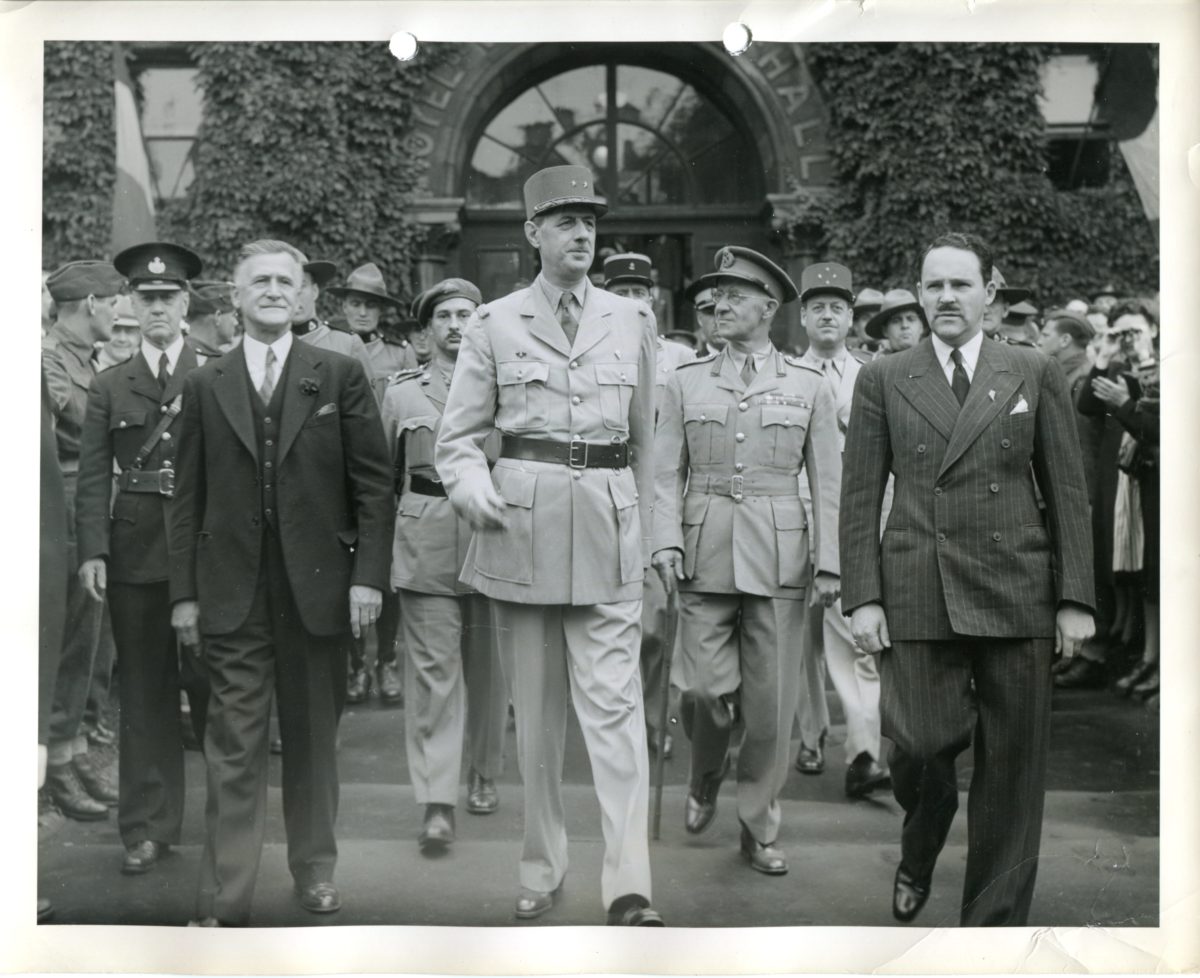
Charles de Gaulle is a major figure in the political and military history of the 20th century. A three-time visitor to the Province of Quebec, de Gaulle sets foot in the Old Capital for the first time on July 12, 1944. One month after the Normandy landings and 45 days after the Liberation of Paris, he arrives to thank Quebecers for responding to the emergency appeal issued on August 1, 1940. Here is a quick summary of this short visit, of which we celebrate the 75th anniversary this year.
A Bit of Context
It has been said that great circumstances make great men. In this case, the Second World War elevated Charles de Gaulle to a symbol of the Resistance and brought him into the History books.
When the Nazi army invades France, de Gaulle distinguishes himself several times at the head of his tanks, in particular halting the Germans at Abbeville in late May 1940. Promoted to general of brigade on June 1, 1940, and then appointed undersecretary of defense and war, de Gaulle retreats to London after the signature of the armistice by Marshal Pétain. With the consent of Winston Churchill, he calls upon the French people to collaborate and fight the Nazi enemy: this appeal for resistance, broadcast via the BBC on June 18, 1840, leads to his being sentenced to death in absentia by the Vichy Regime.
An exiled military leader, de Gaulle organizes the resistance to liberate France. He founds the French Committee of National Liberation, and coordinates armed forces that will become the Free French forces. In 1944, while still in exile, Charles de Gaulle becomes President of the Provisional Government of the French Republic. After the Normandy Landings on June 6,1944, he urges General Dwight D. Eisenhower, commander-in-chief of the Allied Forces, to liberate France promptly.
May we remind that, in that global war period, the Allies do not recognize de Gaulle as the rightful representative of France! This, indeed, is the reason why he was not invited to the First Quebec Conference, in 1943.
Travel to America
Charles de Gaulle begins a journey to America in the summer of 1944, to discuss with President Franklin Delano Roosevelt. His visit to the United States from July 6 to 11 aims at reassuring the President of his intentions. The French general is invited to the White House.
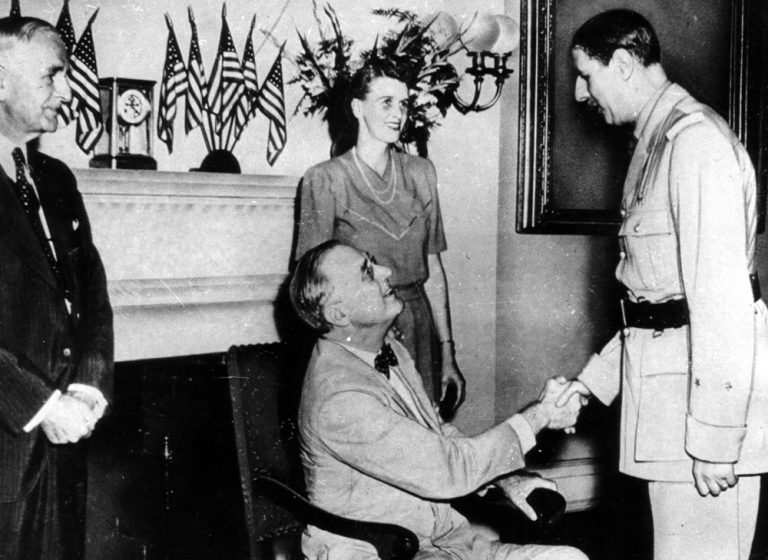
As part of this diplomatic journey, the President of the Provisional Government of the French Republic heads north for a short visit in Canada.
Visit in Québec City
On July 11, 1944, de Gaulle travels to Ottawa, which he visits for the first time. Upon landing, he is greeted by Canadian Prime Minister William Lyon Mackenzie King, who treats him like a head of state. Before the Canadian Parliament and Governor General, Princess Alice, Prime Minister Mackenzie King and the diplomatic corps, the 53-year-old man delivers a speech recalling the close link between France and Canada, particularly in such dark times, as the Nazi Regime stomps over European nations. He also tacitly admits that he is a Catholic (and not a Republican Atheist) to ingratiate himself to the religious elite of the province.
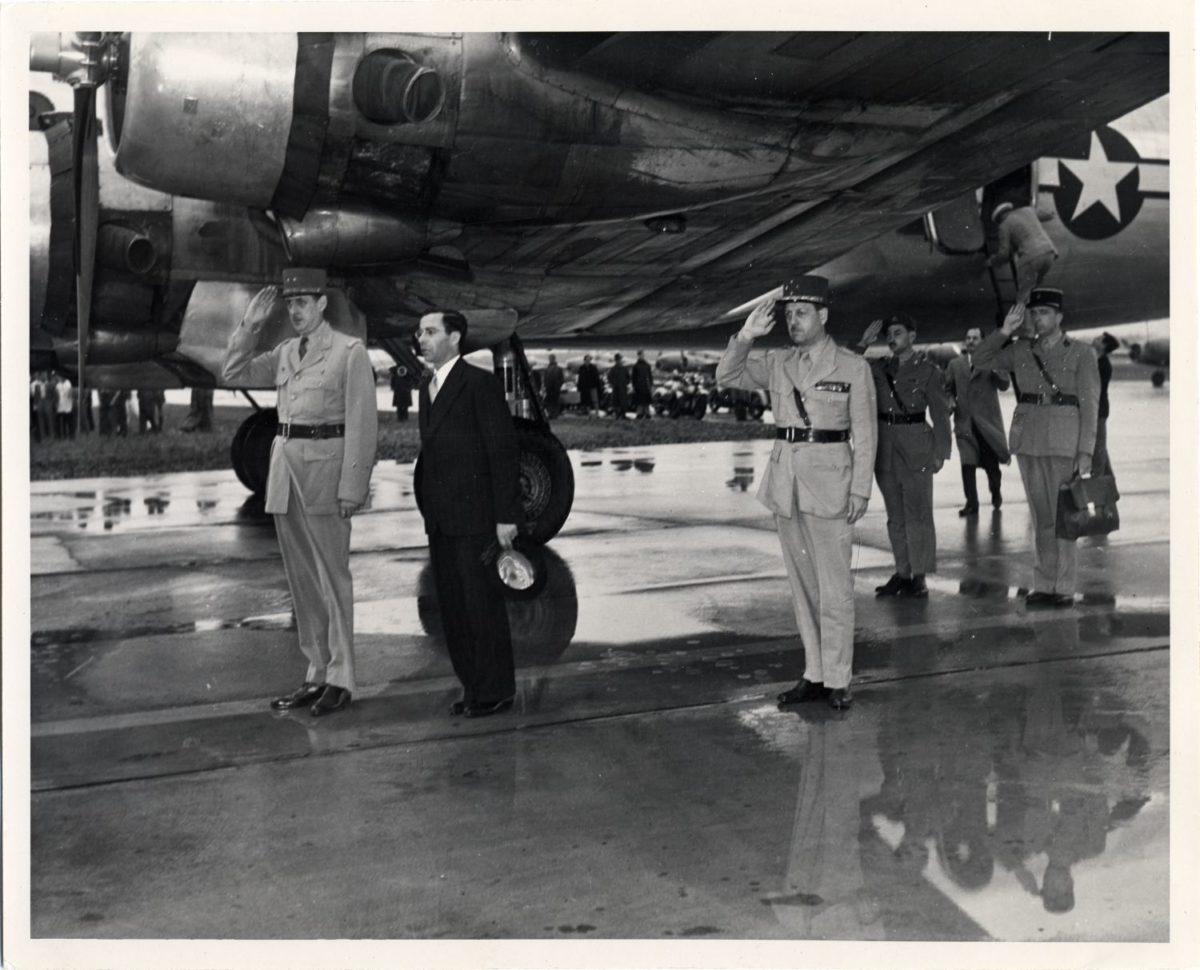
De Gaulle extends his visit one day to travel to Québec City. In the morning of July 12, 1944, he leaves the federal capital and heads for the provincial capital. The small aircraft lands at L’Ancienne-Lorette Airport. With a dozen police motorcycles preceding his car, Charles de Gaulle goes around the Old Capital and on to the City Hall. He is greeted warmly by Mayor Lucien Borne and many personalities from the city; amongst them is Dr. André Simard, from Québec City’s Free France Committee. It should be noted that Québec City is home to the very first Free France Committee outside England. De Gaulle then makes his way to the official residence of the Lieutenant-Governor.
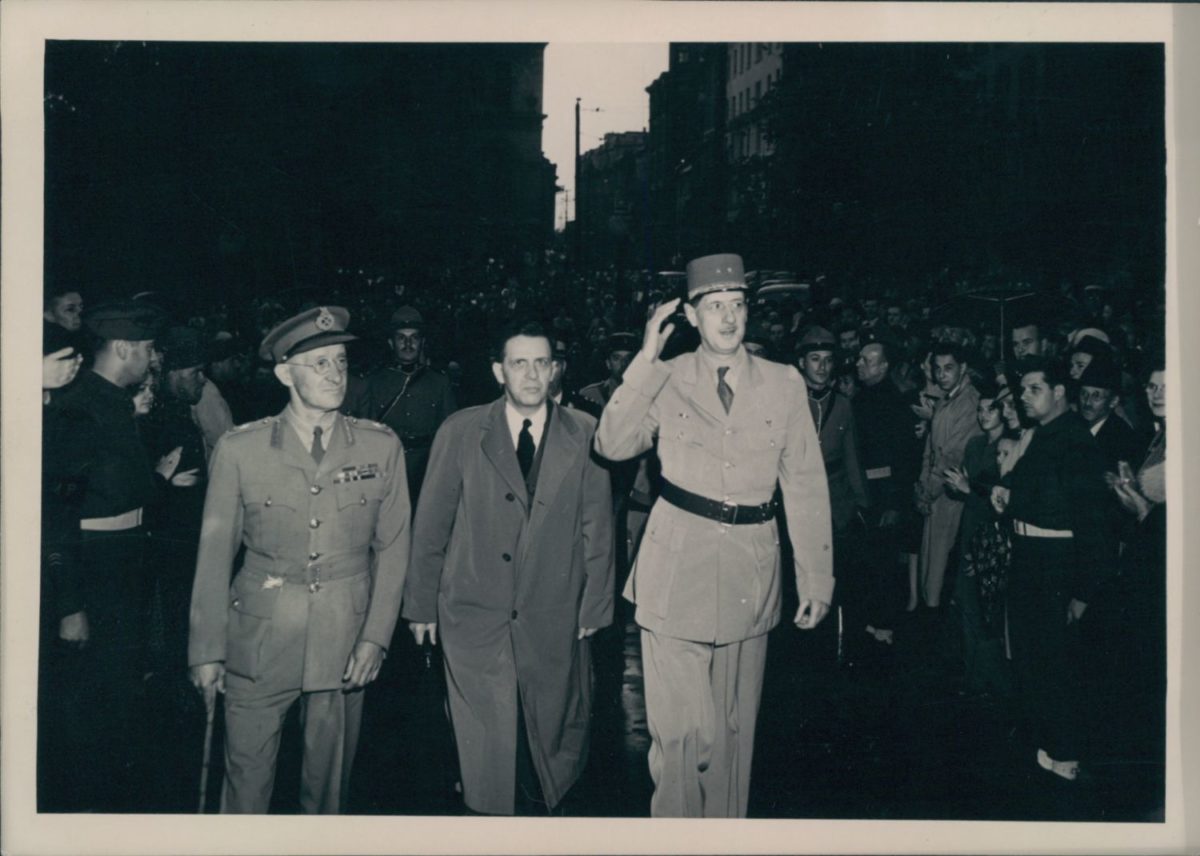
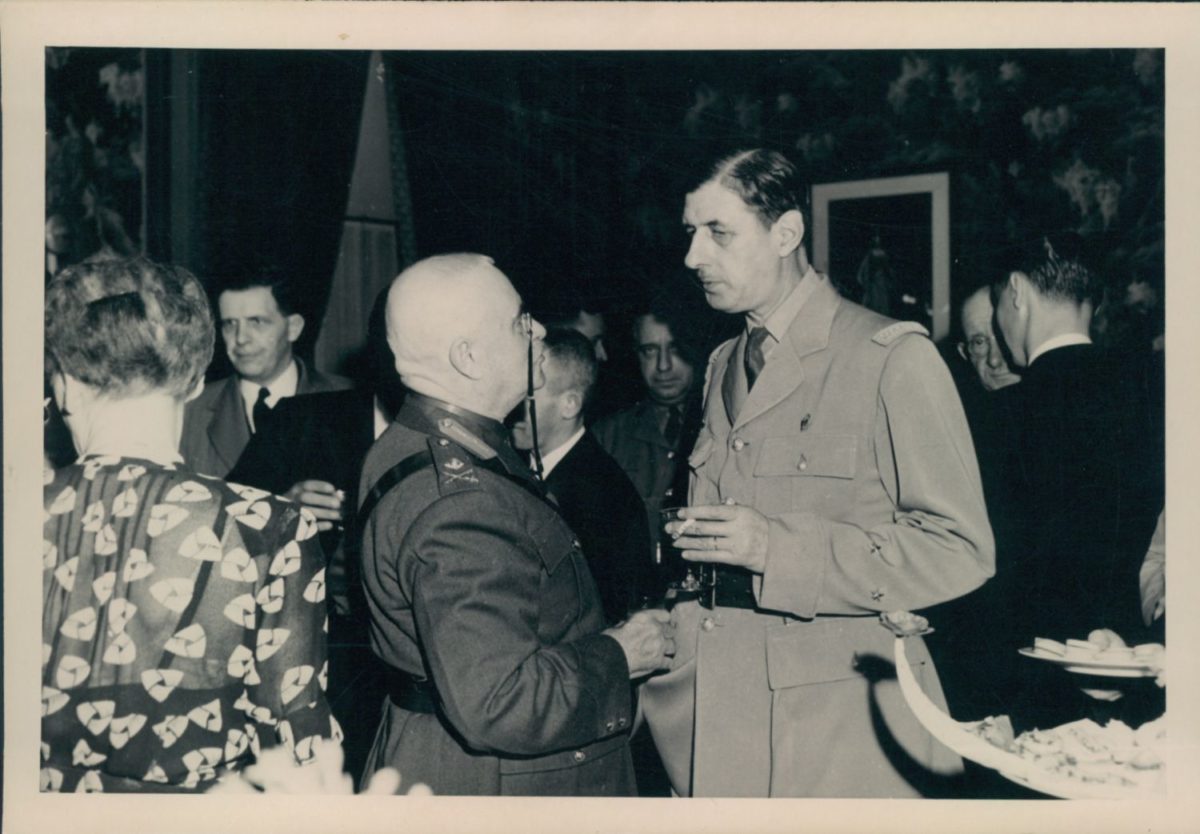
In the afternoon, de Gaulle travels to Montreal where he visits the La Fontaine Park and lays a wreath at the cenotaph dedicated in honour of the French soldiers who gave their lives during the First World War. He then meets with Quebec Premier Adélard Godbout, and Montreal Mayor Adhémar Raynault, and he signs the city’s guest book. From a balcony at Hotel Windsor, Charles de Gaulle gives a speech before a few hundred supporters huddled in the Dominion Square. Many French are on the site to sing the Marseillaise with de Gaulle. In conclusion, the same evening, he boards a plane again and leaves Quebec, unaware that he would only come back in 1960.
A few weeks after the General’s visit in Quebec, the City of Light is finally liberated from the German occupation. On August 25, the troops led by General Leclerc drive the Nazi out: The Liberation gives back to France its unity and sovereignty. De Gaulle is reinstated at the ministry of war in Paris, meaning that the Vichy Regime was just a hiatus, and that the Republic had never ceased to exist. On August 26, he descends the Champs-Élysées in triumph.
It was not until October 23, 1944, that the Provisional Government and its leader, Charles de Gaulle, were officially recognized by the United States, Great Britain and the Soviet Union.
Memory of Charles de Gaulle in Québec City
Charles de Gaulle will always have fond memories of his first visit on Quebec soil in 1944. He addresses the matter in his Mémoires de guerre.
A few years later, in April 1960, Charles de Gaulle travels back to Quebec as President of the French Republic. During the Quiet Revolution, he endeavours to strengthen Franco-Quebec relationships. In July 1967, he pays his third and last visit to Quebec, during which he delivers his famous “Vive le Québec libre!”.
A statue of General de Gaulle stands on the median at the corner of Grande Allée East and Cours du Général-de Montcalm, near the Voltigeurs de Québec Armoury.